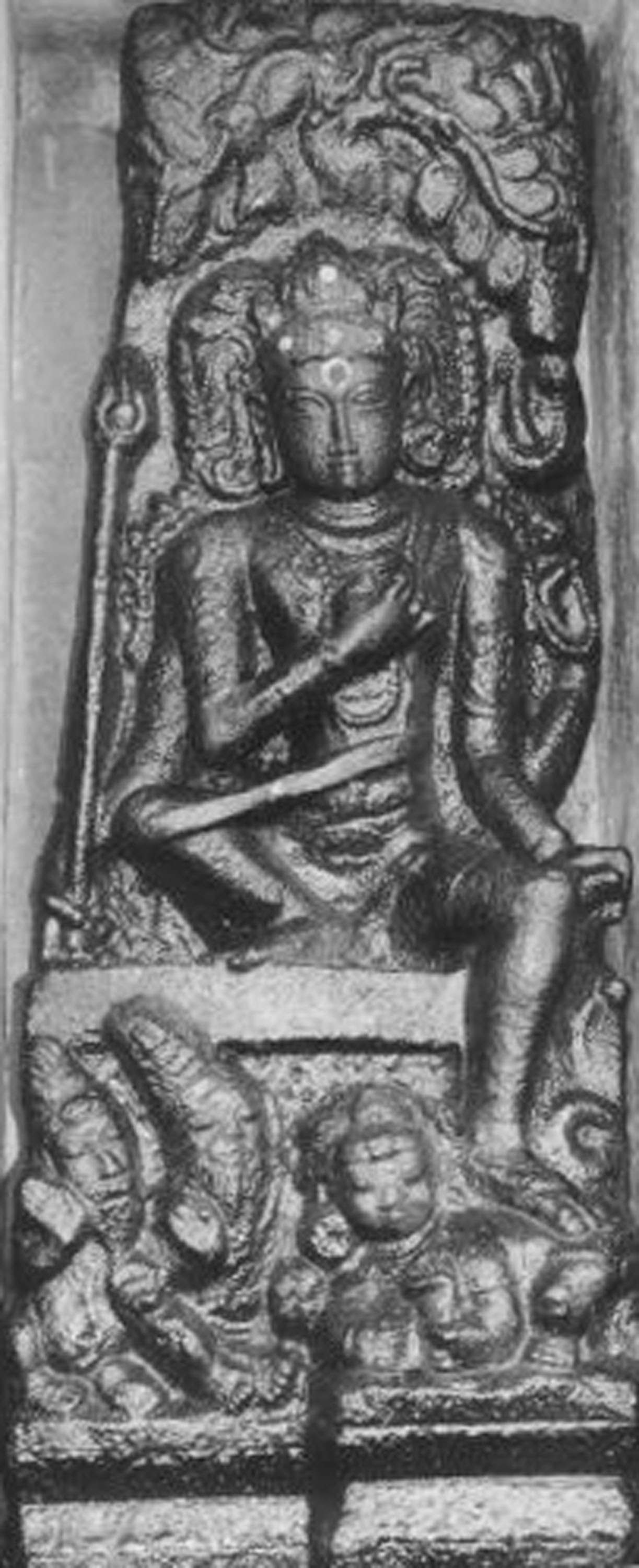Abodes of Ganesha
Temples of Tamilnadu
|

All about Shiva
Beliefs and Legends >>Shiva
Dakshinamurthy
Dakshinamurthy is one of the well known iconic representaions of Shiva, some of the others being Nataraja, Somaskanda, Chandrasekhara etc.
The south facing niche (goshtam) of all Saivite sancta is adorned with an image of Dakshinamurthy, to whom worship is offered. Many of the Saivite temple towers also depict images of Dakshinamurthy facing the southern direction.
Indian tradition accords a special reverence to the Guru or the teacher. Dakshinamurthy, in the Saivite system of beliefs is regarded as the ultimate Guru - the embodiment of knowledge and the destroyer of ignorance (as represented by the demon being crushed under the feet of the deity).
The iconic representation of Dakshinamurthy represents Shiva, seated under a banyan tree (in silence) inspiring the Sanakaadi rishis.
Dakshinamurthy is portrayed as being in the yogic state of abstract meditation - and as a powerful form brimming with ever flowing bliss and supreme joy.
Variations of this iconic representation include Veenadhara Dakshinamurthy, Rishabharooda Dakshinamurthy etc.
The sanskrit slokas of Aadi Sankaracharya extol the attributes of Dakshinamurthy.
The fifth day of the week, Thursday is associated with the planet Jupiter and is referred to as Guru-Vaaram. It is on thursdays that special worship services are offered to Dakshinamurthy in many Saivite temples. Some temple traditions hold full moon nights, particularly the night of the Guru Poornima as the appropriate time for worship services to Dakshinamurthy.
There are just a handful of temples where there is a processional deity of Dakshinamurthy. It is only the stone carved images of Dakshinamurthy that are seen in all Saivite temples. The Vaikom Mahadevar temple in Kerala regards the deity enshrined in the form of a Shivalingam as Dakshinamurthy.
